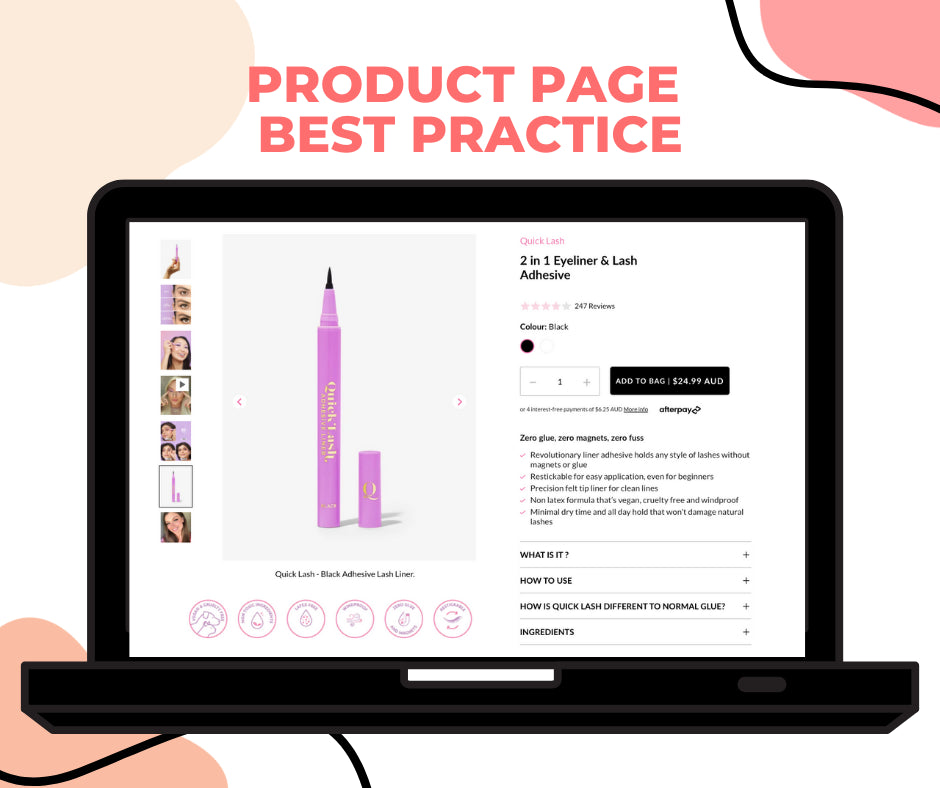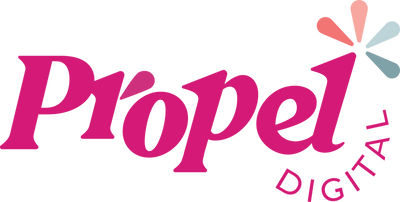
· By Lauren Morton
The ingredients for a high converting product page
You probably won’t be surprised to hear that most conversions on websites happen from the product pages (shock horror)! That’s why it’s more important than ever to make your product pages as ‘sticky’ as possible. Since your website visitors cannot touch, feel, or even wear your products before purchasing, your product page’s design and content needs to go a LONG WAY in convincing someone to buy.
The Checklist
– The first product image must be high quality on a clean background with little text overlay (if any).
– There must be at least 6 images on each product page.
+ Clean, e-commerce images
+ Lifestyle images of the product in a flat lay or in a beautiful setting
+ Product being used
+ Detailed shots of the product (the material, the labels, the packaging).
+ Start the description with the name of the product E.G. “The Get Sport Classic Black Tee is the must-have addition for your gym bag”.- The next few sentences need to explain the product in detail & should ideally have a minimum of 500 words.- The product description should also contain specifics of the product:
+ Sizing and Fit
+ Material
+ Features
– Product pages should have verified reviews, FAQs, Shipping Info, Returns Info and best selling products feature trust badges like ‘Best Seller’ or ‘Staff Pick’ very easily visible.
– If you can, include videos of your products in use!
– Keep your customers abreast of your stock levels! Have a stock meter present on the product page.
